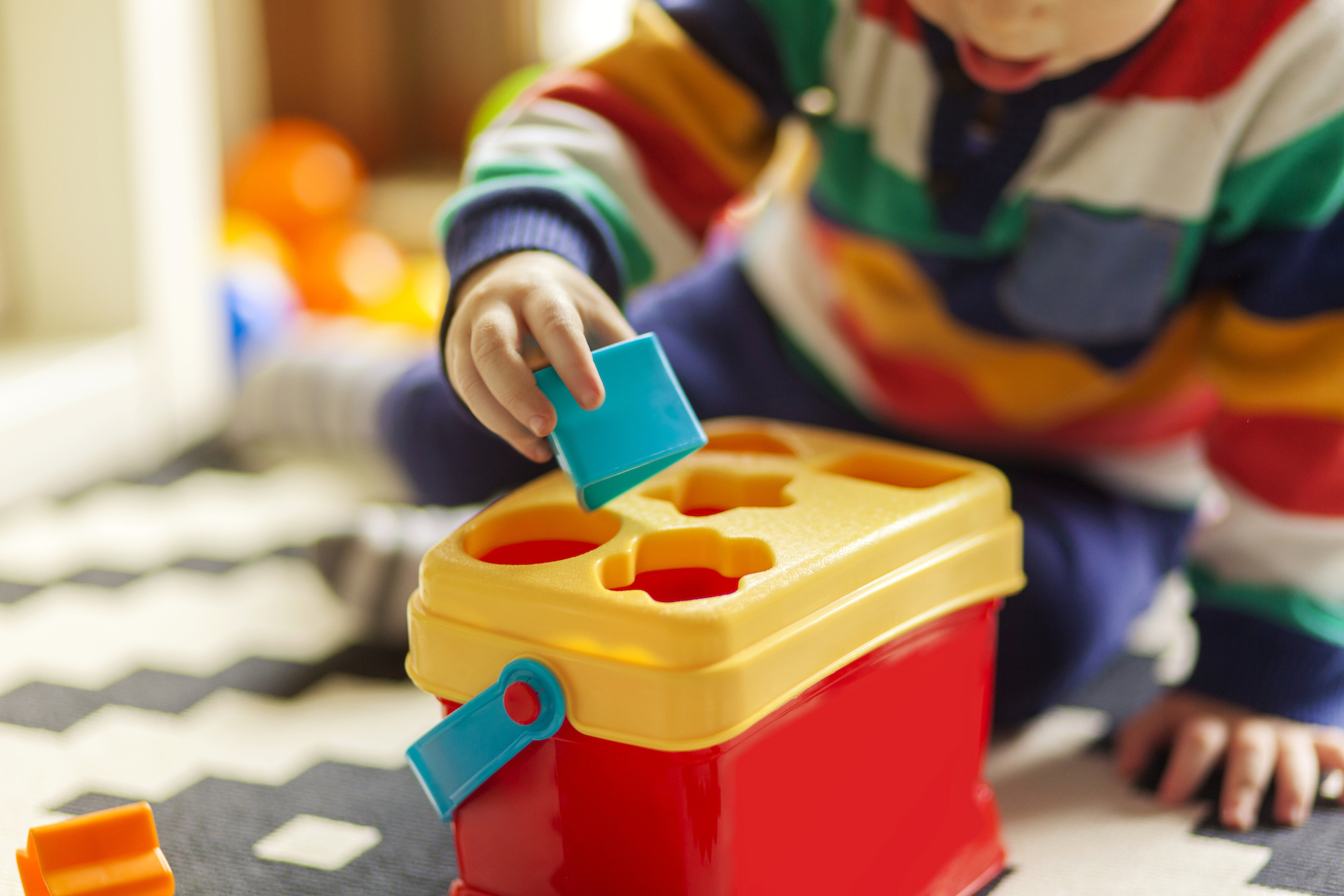Shape Recognition Games for Toddlers: 10 Brain-Building Activities That Actually Work

Most parents know that teaching shapes is important. What they don’t always realize is why it matters so much or how those simple “circles or squares?” moments can shape their toddler’s brain for years to come.
What if we told you that your child’s ability to recognize a triangle or a circle at just 20 to 24 months can actually predict how strong their language and thinking skills will be when they’re in first grade? That’s not an exaggeration—it’s science. Neuroscience research reveals that when toddlers learn to identify and categorize shapes early, they’re not just learning geometry. They’re wiring their brains for the kind of abstract thinking that makes reading, reasoning, and problem-solving possible during their 6-7 years.
So yes, when you sit on the floor and say, “That’s a circle!” you’re doing much more than teaching shapes. You’re literally helping your child’s brain grow. Let’s explore how this works, and then you can try through ten everyday play ideas that turn simple shape fun into brain-building magic.
Why Shape Recognition Matters (More Than You Think)
When your toddler learns to spot a circle or sort a square from a triangle, something remarkable happens inside their brain. They begin to see patterns in their world, group similar things together, and connect visuals to words.
In simple terms: understanding shapes helps children learn how to organize the world in their minds. For example, when they understand that all round things are circles — no matter their size or color — they’re building the same thinking skill they’ll use to see that all long, yellow fruits are bananas, whether big or small, and that apples can be red, green, or yellow.
When Shape Knowledge Develops in Kids
If your toddler doesn’t yet recognize many shapes, don’t worry. Shape recognition unfolds gradually, and there’s a typical rhythm to it:
- 18–25 months: You might notice your child pointing at circles or trying to fit blocks into a sorter, but they may not know names yet. That’s normal.
- 25–30 months: A burst of learning happens. Suddenly, your toddler can name circles and squares and begins to see shapes in everyday objects.
- 30–36 months: Now they start recognizing shapes even when they appear in new contexts—like a triangular pizza slice or a rectangular door.
This 18 to 36 month window is a golden period for spatial learning. As parents, how we play, talk, sing, and explore shapes together will make a lasting difference to our child.
What Makes Shape Activities Actually Work
Here’s the secret: toddlers need to play with shapes, not just see them.
Watching a video about circles won’t do much. But picking up a wooden circle and figuring out which hole it fits into? That’s where the real brain-building happens.
Hands-on experiences help toddlers build “mental maps” of shape properties. Feeling the edges of a square, the roundness of a circle, the corners of a triangle—this sensory feedback builds the foundation for geometry and reasoning skills as they grow up. So, whenever possible, let your toddler touch, build, sort, and play. That’s how learning sticks.
You don’t need fancy toys or apps. The best shape-learning moments usually come from things already in your home like spoons, plates, coins, blocks, buttons and such. Listed below are some activities which can help you get started.
- The Magic of Shape Sorters
That classic toy, the one with holes and chunky blocks, is more than a baby favorite. It’s a shape-learning powerhouse.
Start simple with a circle, square, and triangle. Let your child hold each piece, feel the sides, and explore where it fits. Say the shape name as they play: “That’s a circle—it rolls because it’s round!”
At first, you can guide their hand. But soon, they’ll beam with pride when they find the right spot on their own. That “click” sound when a piece fits perfectly gives immediate feedback that strengthens learning.
- Shape Matching Cards
Homemade or store-bought, matching games are wonderful for visual comparison. Draw or print pairs of simple shapes, and spread them face-up on the table. Together, find which ones match.
For younger toddlers, you can start with three pairs for Circle, Square and Rectangle. For older kids, increase the number and shapes, or even flip them face-down for a memory-style challenge.
Each time your child matches two cards, they’re sharpening their ability to notice details and remember things, the same skills that help with early reading.
- The Shape Scavenger Hunt
Turn your home into a discovery zone! Announce, “Let’s go on a circle hunt!” and walk around spotting round objects—plates, picture frames, clocks, coins, board books, floor tiles, doors, televisions.
Cheer together each time they find one. You can count how many you’ve discovered or see who can find the biggest circle in the room.
Later, switch to squares or triangles. And as your child grows, point out less typical shapes—like a scalene triangle or a long rectangle. It teaches them that shapes come in many forms, not just the “perfect” ones in books.
- The Outdoor Shape Walk
Step outside for a bigger adventure. The world is full of shapes—wheels on cars, rectangular windows, triangular roofs, circular flowers.
Ask your toddler to spot each one as you stroll. You can even take photos and create a little “My Shape Book” when you return home.
This activity helps toddlers connect abstract ideas to real-world objects. It’s the moment they realize that shapes aren’t just drawings.They are everywhere.
- Playdough Shape Creations
There’s something magical about playdough. It turns shape learning into a sensory experience.
Roll the dough into balls for circles, flatten it into pancakes, or press it into squares and triangles using your hands or cookie cutters. As you play, describe what you see:
“This is a circle. Circles are round and smooth.” “Thats a square. Squares have four sides, all the same.”
When toddlers shape the dough themselves, they don’t just learn what a shape looks like—they feel it, too. All that squishing, rolling, and pressing helps build both fine motor skills and a better understanding of space and shape in the most fun way.
- Sponge Painting with Shapes
This activity is pure fun. Grab some sponges and scissors. Cut sponges into simple shapes (circle, square, triangle). Now with your kid, you can dip them in washable paint, and stamp them onto paper.
As your toddler paints, name the shapes aloud. Once the masterpiece dries, count how many circles or triangles they made.
This activity is colourful, and a little bit of a mess — everything toddlers love! It’s the perfect way for little ones to learn while having fun..
- Jump, Hop, and Move with Shapes
Learning shapes doesn’t have to mean sitting still! Grab some painter’s tape or chalk and draw big shapes on the floor. Then turn it into a movement game: “Jump to the circle!” “Hop to the square!” “Crawl to the triangle!” or “Spin to the star!”
When kids learn with physical movement, it helps them remember. It’s called embodied learning. Their bodies are learning right along with their brains, which makes it so powerful.
- The Shape Parade
Toddlers love a good parade. Hand your child a cardboard shape cutout (like a Circle) and say, “Let’s find things that match your shape!”
March together through the house. Each time they find a match—a coaster, a plate, a wheel—do a happy dance or clap together.
It’s joyful, silly, and social which is exactly the kind of play that helps toddlers learn best.
- Build It with Blocks
Pull out those wooden or foam blocks and start building. “Let’s make a square house,” or “Can we stack the triangles to make a roof?”
Encourage your child to group shapes, create patterns, or arrange them into pictures. As they play, describe what you both are building.
Research shows that block play boosts spatial reasoning – their ability to judge the space and size. This lays the foundation for future math and problem-solving skills. So yes, that “tower time” really counts as learning.
- Puzzle Time
Simple wooden shape puzzles are a must-have for shape learning. Begin with single-shape puzzles—one big circle or square—and move up to boards with several shapes as your toddler grows.
When your child turns and twists a piece to make it fit, they’re developing mental rotation skills, a key predictor of later math success. And the look of triumph when they complete the puzzle? Priceless.
Things to Keep in Mind
Even with the best intentions, a few missteps can slow down shape learning:
- Introducing too many shapes too soon. It’s best to start with three basics—circle, square, triangle—until your toddler truly masters them. Later you can introduce other shapes as well.
- Only showing “perfect” examples. Once they understand the basics, you can teach them that a tilted square is still a square! Show variety to build flexible understanding.
- Using vague words. Most of the time, use words like “circle”, not “round thing.” Toddlers absorb precise vocabulary quickly.
- Rushing repetition. If your child wants to play the same game every day, that’s great! Repetition strengthens memory and confidence. But in other cases, give them time and try again later in the day.
How to Fit Shape Learning Into Everyday Life
You don’t need “lesson time” to learn about shapes. Just share your thoughts throughout your day:
- During meals, point out that, “Your plate is a circle. The toast is a square.”
- While reading a story or picture book, show them the shape. “Look at the window in the picture. It’s a rectangle.”
- When you go for walks, point out, “That sign looks like a triangle!”
- During playtime, include one short shape game – like play dough or shape sorter box.
Aim for 5–10 minutes daily of playful exposure and a couple of longer shape activities each week. Consistency beats intensity. Small, frequent moments everyday build lasting understanding in children.
Final Thoughts
Shape recognition isn’t just about teaching your child to point at a triangle. It’s about nurturing the mental muscles that will help them read, reason, and solve problems for years to come.
Research strongly states that toddlers who develop strong shape recognition around 20 months go on to show stronger language and cognitive skills in elementary school. That’s a long-term payoff from a few minutes of playtime today.
So go ahead—dust off that shape sorter, grab some chalk, or roll out the playdough. Your toddler will think you’re just playing. But you’ll know you’re building their brain—one circle, square, and triangle at a time.
